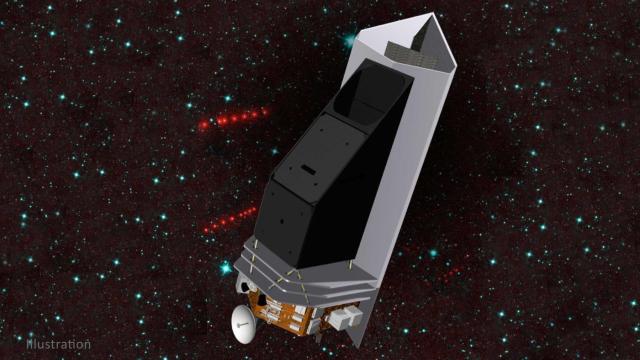NASA’s plan for an upcoming infrared asteroid-hunting telescope, called Near Earth Object (NEO) Surveyor, has officially changed. NEO Surveyor’s expected price tag has doubled from an estimated high of $US600 ($833) million to a whopping $US1.2 ($2) billion, while the launch has also been pushed from 2026 to June 2028.
The planned NEO Surveyor mission has passed a NASA technical review, but with some important, if not uncomfortable, adjustments. The telescope is part of NASA’s initiative to identify and catalogue near-Earth objects — a key component of its overall planetary defence strategy.
It all began with a congressional directive forged 17 years ago. The 2005 George E. Brown, Jr. Near-Earth Object Survey Act established a survey program with the explicit goal for NASA to catalogue 90% of near-Earth objects larger than 328 feet (100 meters) in diameter and to assess their risks to our planet. Congress wanted this done by 2020, which obviously hasn’t happened. According to NASA program scientist Kelly Fast, as reported in Space Policy Online, it will now, unfortunately, take another three decades for NASA to reach the goal requested by Congress.
NEO Surveyor is meant to replace the NEOWISE space telescope mission, which has been hunting for asteroids and comets since its launch in 2009. NASA recently granted the NEOWISE mission a two-year extension, taking the project to 2023. NEO Surveyor’s rescheduled launch to 2028 only extends an already gigantic delay between the two missions, which could negatively impact NASA’s near-Earth object research.
NASA’s interest in near-Earth objects is a part of a twofold approach to planetary defence, which includes the detection of asteroids and comets as well as the mitigation of those objects, in which NEO Surveyor and NEOWISE are meant to help with the former. Active mitigation of near-Earth objects is another story, with the recent DART mission serving as the first test of a planetary defence strategy; earlier this year, the DART spacecraft slammed into a harmless asteoroid, slightly altering its orbital trajectory, in what was a very promising test. For future DART-like strategies to work, however, we’ll need to find dangerous asteroids before they become a problem, making the delay with NEO Surveyor all the more unsavoury.
More on this story: Why DART Is the Most Important Mission Ever Launched to Space
The benefit of NEO Surveyor will be its vantage point from space, which offers scientists an increased field of view over ground-based detection. This larger window will likely help to accelerate NASA’s current 30-year detection timeline to meet Congress’ 2005 goal.
NASA’s DART mission helped to illustrate the importance of near-Earth object detection. While a delayed timeline will hurt NASA’s efforts to study and catalogue these comets and asteroids — and any threats they pose to Earth and spaceflight — the increased price tag could be an indication that our government is taking these potential threats seriously.
More: This High-Tech Cube Will Visit the Asteroid Smashed by NASA’s DART Spacecraft
